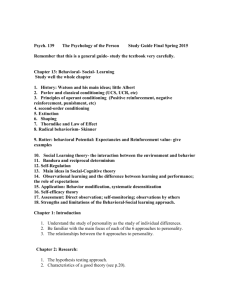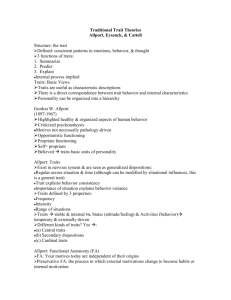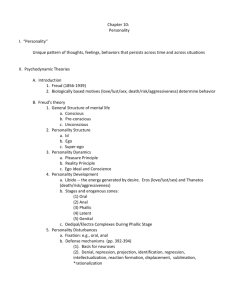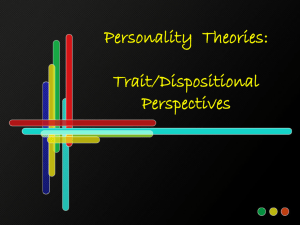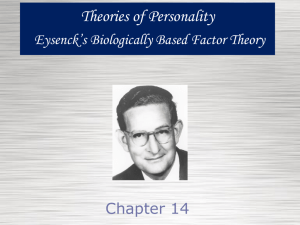Trait Theories: Allport, Eysenck, Cattell
advertisement
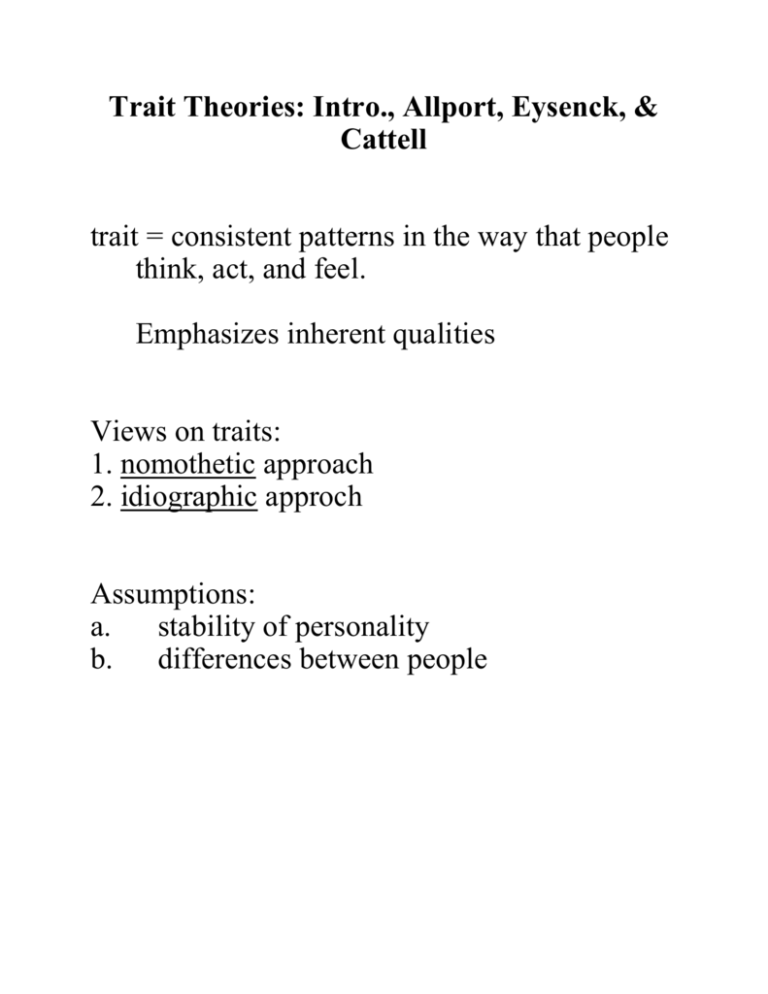
Trait Theories: Intro., Allport, Eysenck, & Cattell trait = consistent patterns in the way that people think, act, and feel. Emphasizes inherent qualities Views on traits: 1. nomothetic approach 2. idiographic approch Assumptions: a. stability of personality b. differences between people Approaches to studying traits: 1. Many-trait approach 2. Single-trait approach e.g. authoritarianism e.g. self-monitoring 3. Essential-trait approach Murray (20+ needs) Cattell (16 traits) Eysenck (3 traits) The Big Five (or Five Factor Model) Gordon Allport (1897 - 1967) ideographic approach interactionism Structure of personality - heirarchy 3. Cardinal traits - ruling passions 2. Central traits 3. secondary traits Proprium = the self functional autonomy- behavior becomes independent of original motive Hans Eysenck (1916 - 1997) PEN Model Three types: 1. Introversion/Extraversion 2. Stability/Neuroticism 3. Impulse control/Psychoticism Inhibition Theory: Why do people differ on these types? Eysenck postulated: A. heredity (research:) B. cerebral cortex differences in CNS C. research in support of Eysenck=s inhibition theory Furnham & Bradley (1997) Furnham et al. (1994) Cambell & Hawley (1982) Landrum (1992), Bullock & Gilliland (1993) In-class application: Based on what you know about yourself, are you an introvert or an extravert? Given your classification as an introvert or extravert, what types of study conditions are likely to maximize your academic performance? Does this match with how you currently study? Cattell (1905 - 1998) Based on language. Used factor analysis to reduce trait words. Used a multivariate statistical approach. 1. Multivariate 2. Bivariate 3. Clinical approach Sixteen Personality Factor (16 P.F.) Questionnaire marriage counseling career testing 16 personality factors: reserved vs. warm reactive vs. emotionally stable deferential vs. dominant serious vs. lively shy vs. socially bold trusting vs. vigilant practical vs. imaginative traditional vs. open to change In-class Integration of material: Compare the views of Allport, Eysenck, and Cattell on the trait concept, emphasizing similarities and differences.



